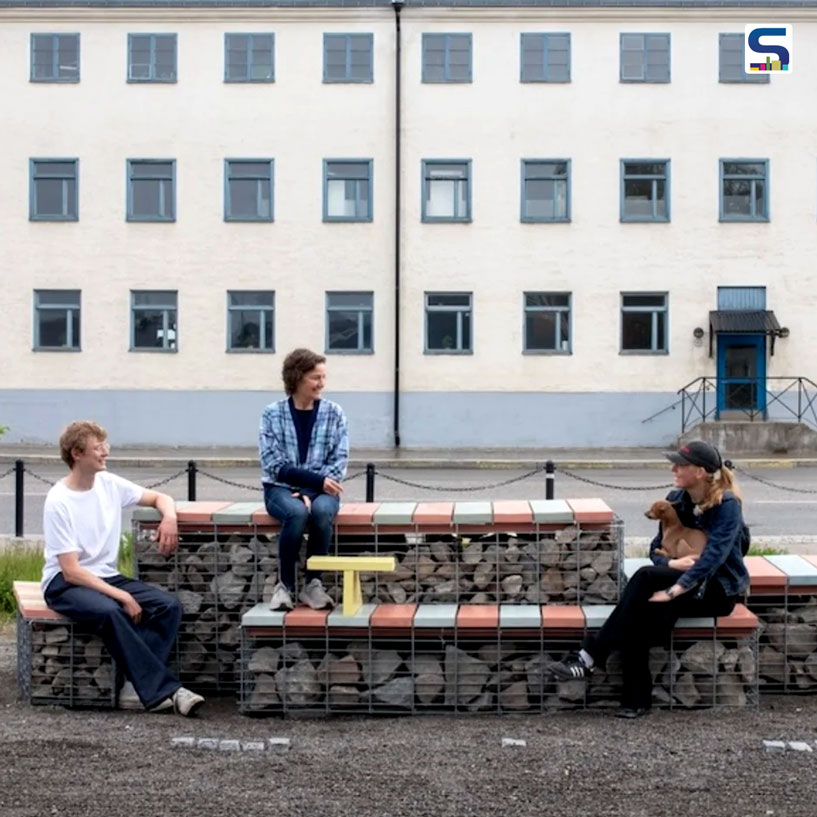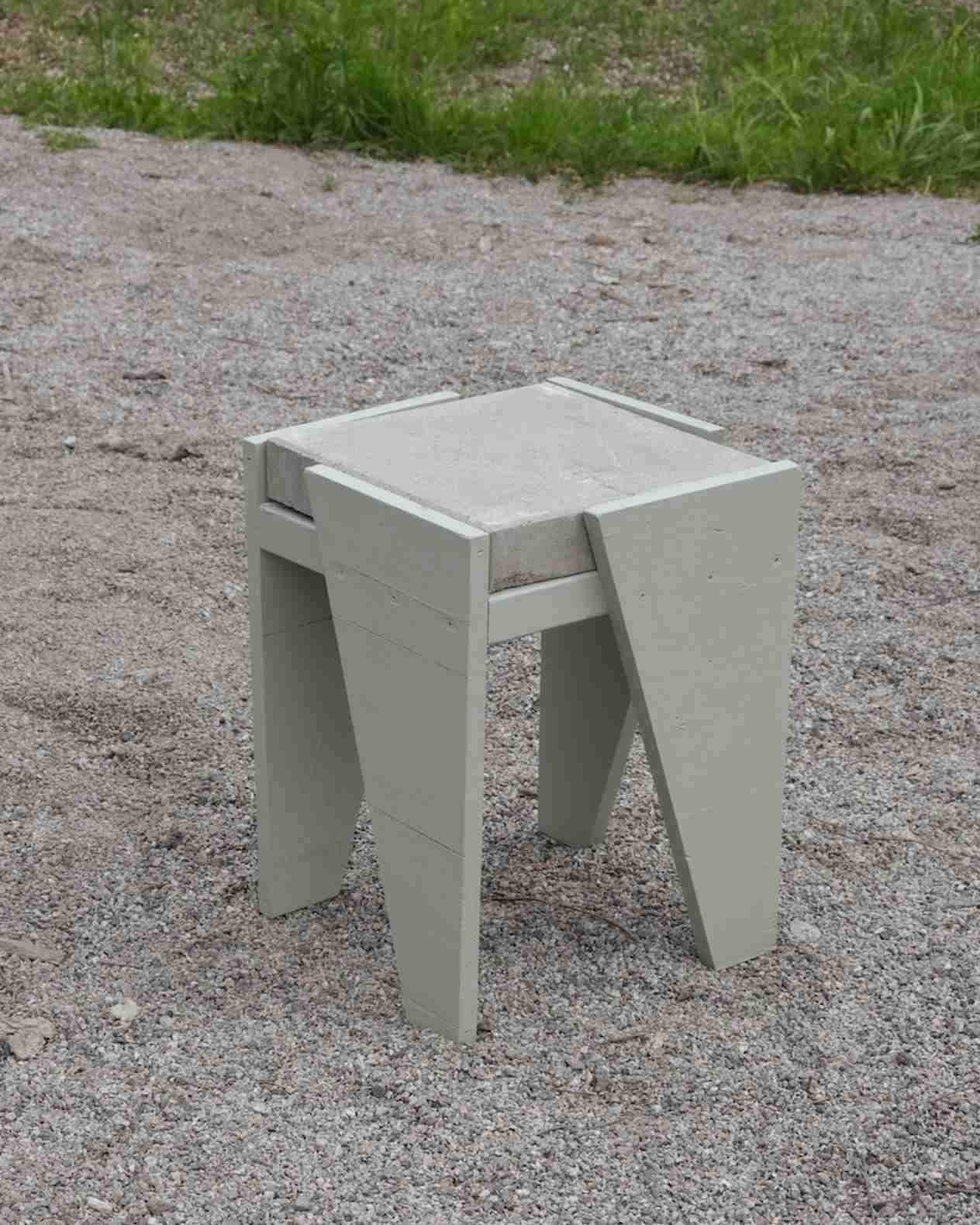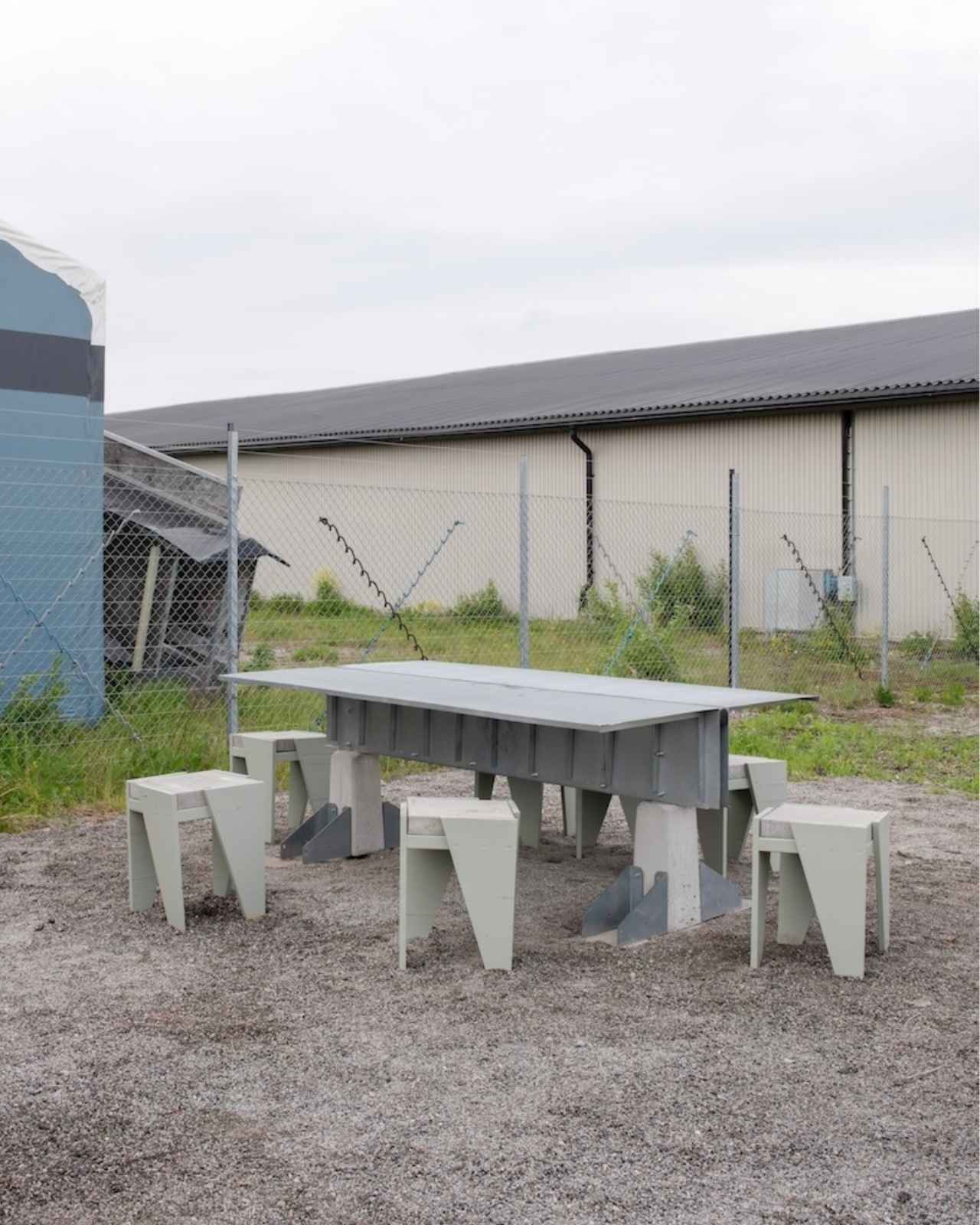
A striking intervention, X-TRAKOJAN, created by designer Nicholas Niemen has been sitting by Stockholm’s busy port. Far from being just another bench, it is a bold statement about transformation, sustainability and the beauty of reuse. Built entirely from discarded construction waste, the project takes what cities often consider a burden and reimagines it as an asset. The result is an X-shaped structure that is as meaningful as it is practical, offering locals and visitors a place to pause, reflect, and engage with their surroundings. Know more about it on SURFACES REPORTER (SR).

The recognizable X-shape is not merely a stylistic decision. It ensures the bench’s strength and stability, enabling it to withstand both the rough Scandinavian climate and the constant activity of the port.
The ingenuity of Niemen’s design lies in both its simplicity and its storytelling. He collected leftover materials from building sites scattered across Stockholm, including timber beams, fragments of concrete and other salvaged elements, and assembled them into a carefully crafted whole. The recognizable X-shape is not merely a stylistic decision. It ensures the bench’s strength and stability, enabling it to withstand both the rough Scandinavian climate and the constant activity of the port. This form, rooted in practicality, doubles as a bold geometric gesture that makes the bench instantly recognizable.

He collected leftover materials from building sites scattered across Stockholm, including timber beams, fragments of concrete and other salvaged elements, and assembled them into a carefully crafted whole.
Yet, X-TRAKOJAN’s beauty is not polished perfection but the authenticity of its scars. Each fragment carries the marks of its previous life such as splashes of faded paint, worn-down corners and rough concrete edges that once formed part of a larger architectural whole. These details invite passersby to look closer, to touch and to notice how memory and material endure even after a building is dismantled. In this way, the bench becomes more than furniture; it becomes a narrative object, one that tells the story of waste reborn as wonder.

Built entirely from discarded construction waste, the project takes what cities often consider a burden and reimagines it as an asset.
The work also highlights a broader issue. Around the world, construction waste is one of the largest contributors to landfill, with millions of tons of usable material discarded every year. By redirecting this waste stream into a creative project, Niemen demonstrates the possibilities of circular design, where materials are seen not as disposable but as valuable resources for new creations. His project serves as a reminder that sustainability does not have to compromise aesthetics or functionality. In fact, it can enhance them by adding layers of meaning and connection.
Image credit: Nicholas Niemen